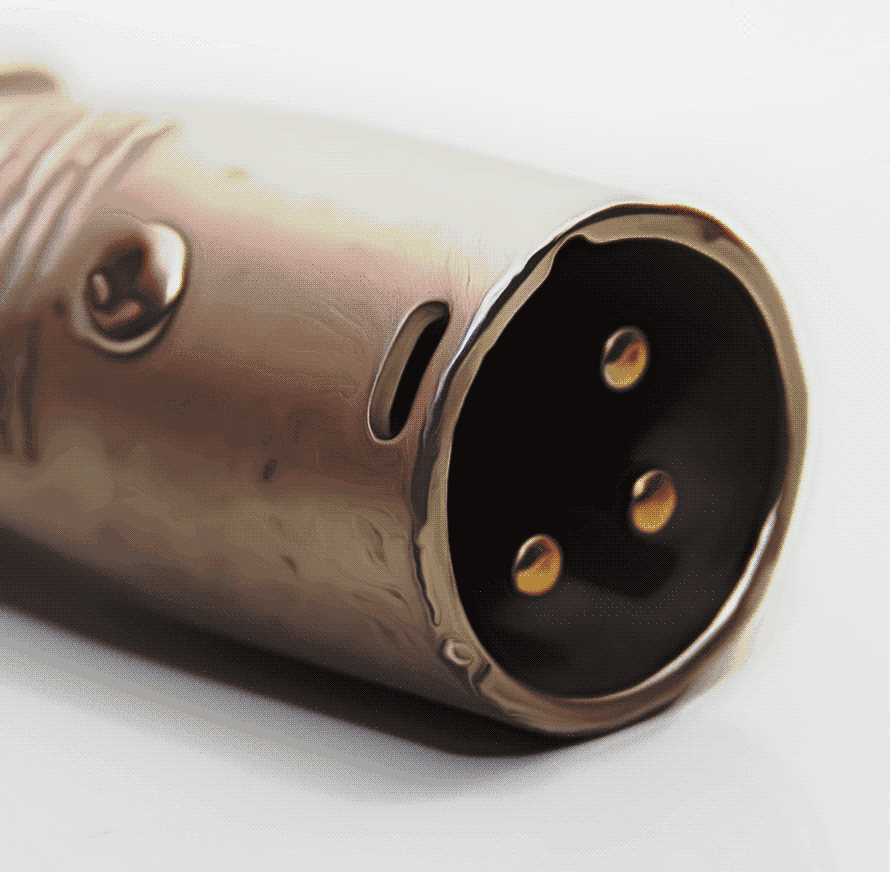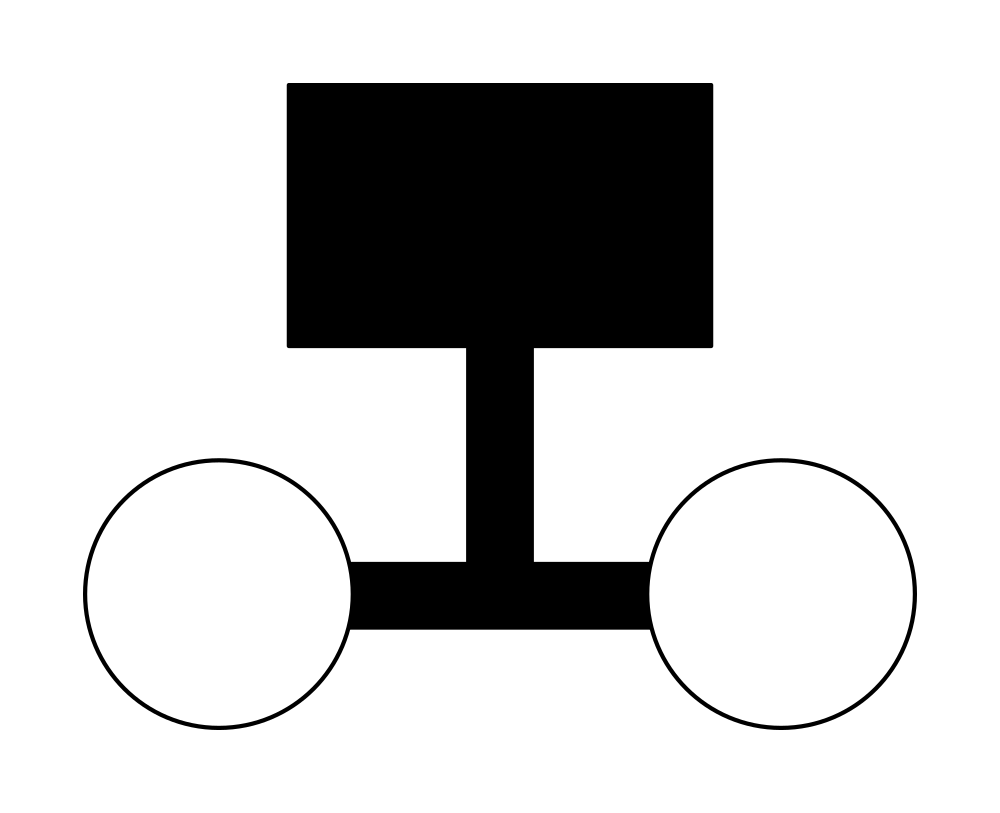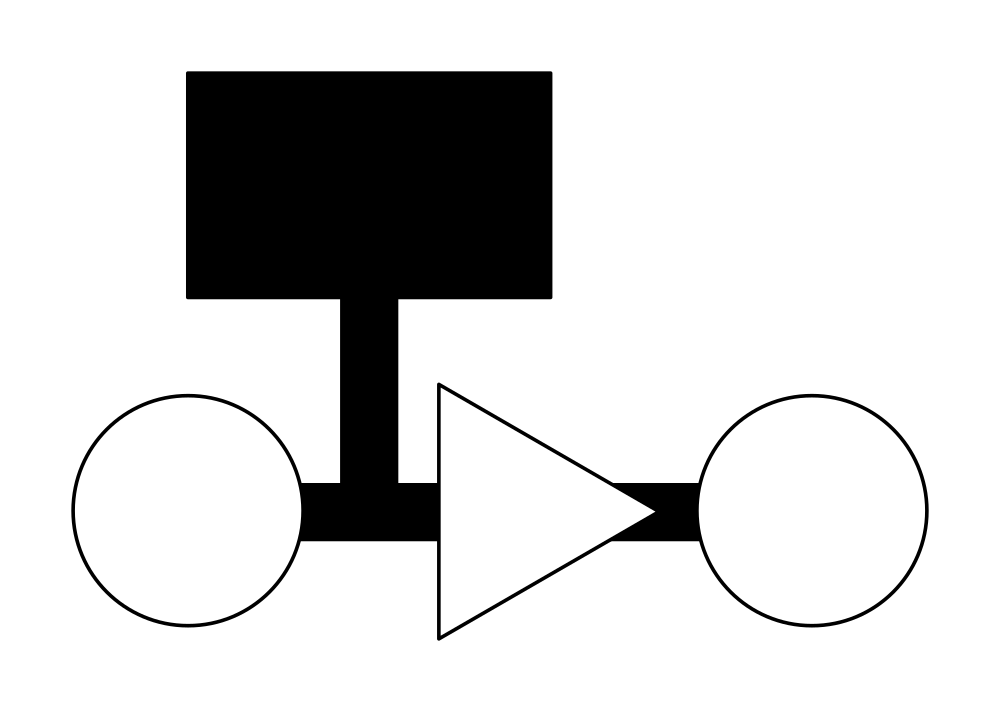Out may be “thru,” but “thru” usually isn’t out.
Please Remember:
The opinions expressed are mine only. These opinions do not necessarily reflect anybody else’s opinions. I do not own, operate, manage, or represent any band, venue, or company that I talk about, unless explicitly noted.

 Want to use this image for something else? Great! Click it for the link to a high-res or resolution-independent version.
Want to use this image for something else? Great! Click it for the link to a high-res or resolution-independent version.The labeling of jacks and connections is an inexact science.
Really.
For instance, there are audio devices with “in” and “out” jacks where you can connect a source to either point and be just fine. It might be confusing, though, to have two areas labeled “input” (or even “parallel input’), so one jack gets picked to be “in,” with the other as its opposite.
At some point, you just get used to this kind of thing. You trundle along happily, connecting things together without a care in the world.
…and then, somebody asks you a question, and you have to think about what you’re doing. Just why is that jack labeled as it is? You’re taking signal from that connector and sending it somewhere else, so that’s “out,” right? Why is it labeled “through” or “thru,” then?
The best way I can put it to you is this: Usually, when a manufacturer takes the trouble to label something as “thru,” what appears on that connector is the input signal, having gone through the minimum necessary electronics to make the connection practical and easy to use. A label that reads “out” may be a signal that passed through a lot of electronics, or it may be a “thru” that’s simply been called something that’s easier to understand.
“Thru,” From Simple To Complicated
That up there is a simplified depiction of the simplest possible “thru.” It’s two connection points, with nothing but some sort of conductive connection between them. Also on that connection is some sort of internal arrangement of electronics. In this kind of thru, you might see male and female jacks on the different points (if the connections are XLR), but the reality is that both connectors can work for incoming or outgoing signals. Put electricity on either jack, and the simple conductors between those jacks ensure that the signal is present on the other connection point.
This kind of thru is very common on passive loudspeakers and a good many DI boxes. You might see a connector that says “in,” and one that says “out,” but they’re really a parallel setup that feeds both an internal pathway and the “jumper” to the other connector. Because the electrical arrangement is truly parallel, the upstream device driving the signal lines sees the impedance of each connected unit simultaneously. This leads to a total impedance DROP as more units are connected; More electrical pathways are available, which means lower opposition to current overall.
So, what’s this, then?
This is a buffered thru. In this case, the two jacks are NOT interchangeable. One connector is meant to receive a signal that gets passed on to internal electronics. That connector is linked to a jack with outgoing signal, but in between them is a gain stage (such as an op-amp). The gain stage probably is not meant to perform meaningful voltage amplification on the input. If two volts RMS show up at the input, two volts RMS should be present at the output. The idea is to use that gain stage as an impedance buffer. The op-amp presents a very high input impedance to the upstream signal source, which makes the line easy to drive. That is, the buffer amp makes the input impedance of the next device “invisible” to the upstream signal provider. A very long chain of devices is made possible by this setup, because significant signal loss due to dropping impedance is prevented.
(Then again, the noise floor does go up as each gain stage feeds another. There’s no free lunch.)
In this case, you no longer have a parallel connection between devices. You instead have a serial connection from buffer amp to buffer amp.
The most sophisticated kind of thru (that I know of) is a connection that has intervening logic. There can be several gradations of complexity on that front, and a “thru” with logic isn’t something that you tend to see in audio-signal applications. It’s more for connection networks that involve data, like MIDI, DMX, and computing. The logic may be very simple, like the basic inversion of the output of an opto-isolator. It can also be more complex, like receiving an input signal and then making a whole new copy of that signal to transmit down the chain.
A connection this complex might not really seem like a “thru,” but the point remains that what’s available at the send connection is meant to be, as much as possible, the original signal that was present at the receive connection…or a new signal that behaves identically to the original.
Moving Out
So, if all of the above is “thru,” what is “out?”
In my experience the point of an “out” is to deliver a signal which is intended to have been noticeably transformed in some way by internal processing. For instance, with a mixing console, an input signal has probably gone through (at the very least) an EQ section and a summing amplifier. It’s entirely possible to route the signal in such a way that an input is basically transferred straight through, but that’s not really what the signal path is for.
With connection jacks, the label doesn’t always tell you exactly what’s going on. There might be a whole lot happening, or there might be almost nothing at all between the input and output side. You have to look at your owner’s manual – or pop open an access cover – to find out.


